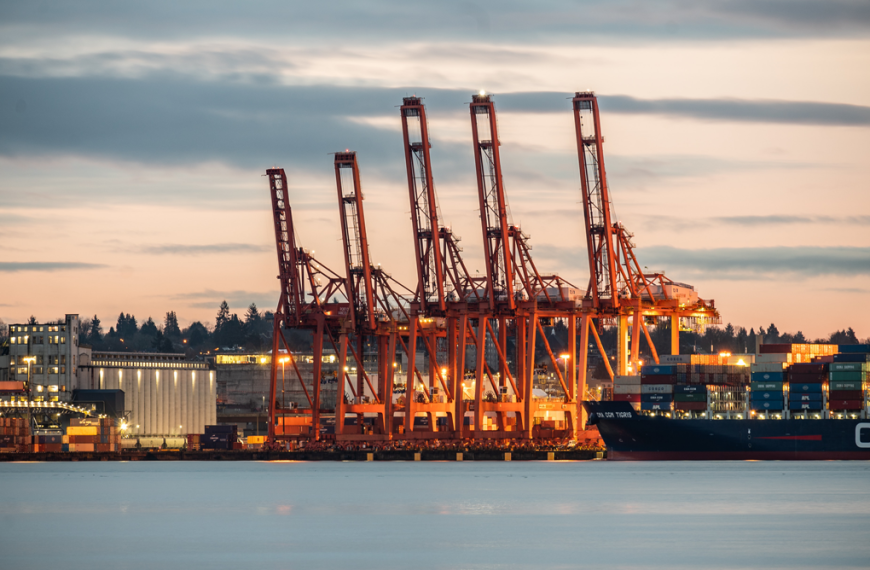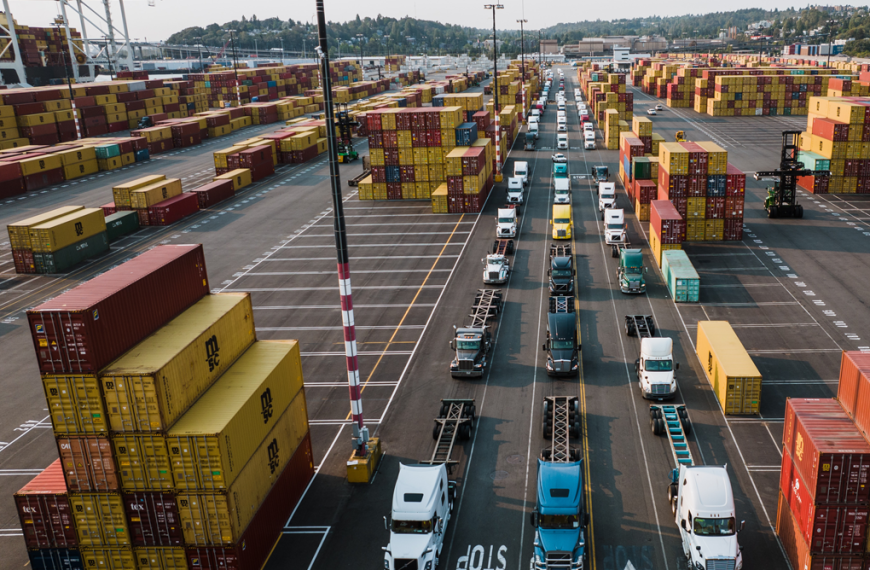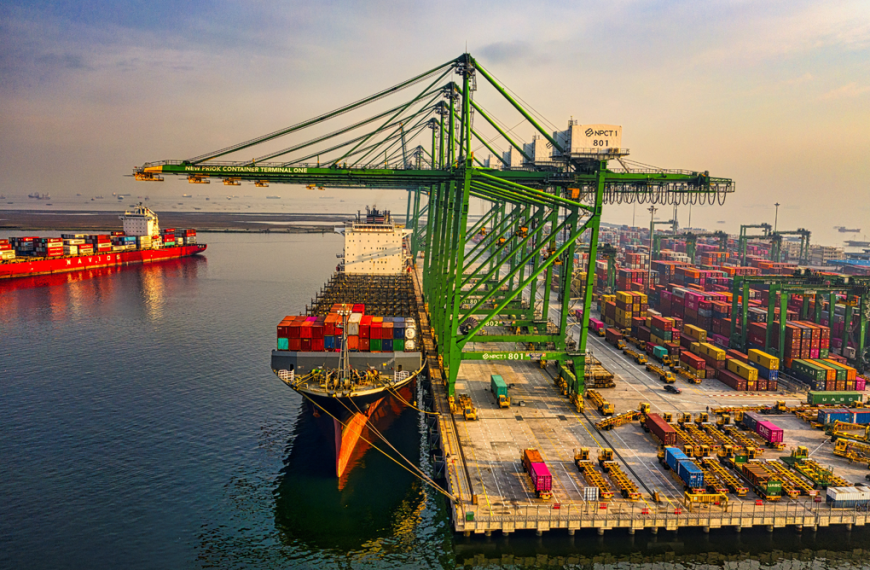Improve your freight forwarding business by streamlining freight quote efficiency quotation processes and reducing costs. As a freight forwarding company, you know that logistics can be a complicated business. From air freight to sea freight, getting the best rates for your clients can be a constant challenge. One way to improve your freight forwarding business is to improve your quote efficiency. In this post, we’ll discuss some of the challenges you might face in your quotation process, as well as strategies for streamlining your operations and reducing costs.
- Challenges in Quote Efficiency
- Streamlining Quotation Processes Using Technology
- Advantages of Using Technology in Freight Quotation Process
- 15 Tips for Improving Freight Forwarding Business Efficiency
- 1. Use Technology Solutions
- 2. Provide Clear Instructions
- 3. Communicate Effectively
- 4. Set Realistic Expectations
- 5. Monitor KPIs
- 6. Implement Quality Control Measures
- 7. Train Your Team
- 8. Optimize Routes
- 9. Consolidate Shipments
- 10. Use Data Analytics
- 11. Implement Lean Principles
- 12. Use Performance Incentives
- 13. Automate Invoicing
- 14. Improve Warehouse Operations
- 15. Continuously Improve
- 11 Strategies to Reduce Freight Costs
- Frequently Asked Questions (FAQs)
Challenges in Quote Efficiency
Freight forwarding can be a time-consuming and labor-intensive process. Many factors can affect the accuracy and speed of your freight quotes, such as incorrect or outdated data, communication gaps, and manual errors. These issues can lead to delays in responding to customer inquiries, lost opportunities, and lost profits.
Another challenge in quote efficiency is the need to keep up with changing regulations and requirements. With ever-evolving trade policies and customs regulations, it can be challenging to stay on top of the latest changes and ensure compliance. Failure to do so can result in costly penalties, delays, and even shipment seizures.
Streamlining Quotation Processes Using Technology
The good news is that technology can help streamline your quotation processes and improve your overall efficiency. By automating repetitive tasks, reducing errors, and providing real-time data, technology can help you save time and resources while increasing accuracy and responsiveness.
One way to improve your freight forwarding business is to invest in a freight management system (FMS). FMS solutions can help you manage your entire logistics operation, from quote to delivery, in one platform. You can automate your pricing calculations, track shipments, and generate reports quickly and easily, all while staying up-to-date on the latest regulations and requirements.
Another technology to consider is a transportation management system (TMS). TMS solutions can help you optimize your freight routes, consolidate shipments, and reduce transportation costs. With features such as real-time tracking and automated freight bill auditing, a TMS can help you streamline your operations and improve your bottom line.

Advantages of Using Technology in Freight Quotation Process
By using technology in your freight quotation process, you can enjoy several advantages. These include:
Improved Speed and Accuracy
Using technology can help improve the speed and accuracy of your freight quotation process. With automated systems, you can calculate quotes quickly and accurately, reducing the chance of errors. This can help you respond to customer inquiries faster and improve your overall customer service.
Real-Time Visibility
Technology can also provide real-time visibility into your logistics operations. With real-time tracking, you can monitor the status of your shipments, identify potential issues, and respond quickly to any problems that arise. This can help you provide better service to your customers and reduce the risk of delays.
Streamlined Processes
Technology can help streamline your freight quotation processes by automating repetitive tasks, such as pricing calculations and data entry. This can free up your team’s time to focus on other important tasks and improve overall efficiency. Additionally, with a transportation management system (TMS), you can optimize your freight routes, consolidate shipments, and reduce transportation costs.
Improved Compliance
Compliance with regulations and requirements is crucial in the logistics industry. By using technology in your freight quotation process, you can stay up-to-date on the latest regulations and ensure compliance. This can help you avoid costly penalties and delays in delivery.
Reduced Costs
Finally, using technology in your freight quotation process can help reduce costs. By automating processes and optimizing routes, you can reduce transportation costs and improve overall efficiency. Additionally, with real-time visibility into your operations, you can identify areas for improvement and reduce the risk of costly mistakes.

| Advantage | Description |
|---|---|
| Improved Speed and Accuracy | Using technology can speed up the quotation process, reduce errors, and enhance customer service. |
| Real-Time Visibility | Real-time tracking can monitor shipments, identify potential issues, and improve customer service. |
| Streamlined Processes | Automated tasks and optimization of routes can free up time, reduce costs, and improve efficiency. |
| Improved Compliance | Stay up-to-date with regulations, avoid costly penalties, and ensure compliance. |
| Reduced Costs | Automating processes, optimizing routes, and identifying areas for improvement can reduce transportation costs. |
In conclusion, using technology in your freight quotation process can provide numerous advantages, including improved speed and accuracy, real-time visibility, streamlined processes, improved compliance, and reduced costs. By investing in technology solutions, such as an FMS or TMS, you can improve your overall efficiency and provide better service to your customers.

15 Tips for Improving Freight Forwarding Business Efficiency
As a company logistics provider or freight forwarding business, you understand the importance of being efficient in your operations. Efficiency not only saves you time and money but also helps you provide better service to your customers. In this post, we’ll share 15 tips for improving your freight forwarding business efficiency.
1. Use Technology Solutions
Invest in technology solutions, such as a freight management system (FMS) or transportation management system (TMS), to automate repetitive tasks, optimize routes, and improve overall efficiency.
2. Provide Clear Instructions
Provide clear instructions to your team on how to handle shipments, including packaging, labeling, and documentation. This can help reduce the risk of errors and delays.
3. Communicate Effectively
Effective communication is key to ensuring that everyone is on the same page. Use tools such as email, phone, or instant messaging to keep everyone informed.
4. Set Realistic Expectations
Set realistic expectations with your customers regarding delivery times, costs, and other factors. This can help reduce the risk of misunderstandings and improve customer satisfaction.
5. Monitor KPIs
Monitor key performance indicators (KPIs), such as delivery times, transportation costs, and customer satisfaction, to identify areas for improvement.
6. Implement Quality Control Measures
Implement quality control measures to ensure that shipments are handled correctly and meet customer expectations.
7. Train Your Team
Provide ongoing training to your team to ensure that they have the skills and knowledge to handle shipments efficiently and effectively.
8. Optimize Routes
Optimize your freight routes to reduce transportation costs and improve delivery times.
9. Consolidate Shipments
Consolidate shipments to reduce transportation costs and improve efficiency.
10. Use Data Analytics
Use data analytics to identify areas for improvement and make data-driven decisions.
11. Implement Lean Principles
Implement lean principles to eliminate waste and improve efficiency in your operations.
12. Use Performance Incentives
Use performance incentives to motivate your team to achieve their goals and improve efficiency.
13. Automate Invoicing
Automate your invoicing process to reduce errors and improve efficiency.
14. Improve Warehouse Operations
Improve your warehouse operations by implementing effective inventory management practices and optimizing workflows.
15. Continuously Improve
Finally, continuously improve your operations by soliciting feedback from your team and customers, and implementing changes based on that feedback.
| Tip | Description |
|---|---|
| Use Technology Solutions | Automate repetitive tasks, optimize routes, and improve overall efficiency with a freight management system or transportation management system. |
| Provide Clear Instructions | Reduce the risk of errors and delays by providing clear instructions on how to handle shipments. |
| Communicate Effectively | Use tools such as email, phone, or instant messaging to keep everyone informed and on the same page. |
| Set Realistic Expectations | Reduce the risk of misunderstandings and improve customer satisfaction by setting realistic expectations regarding delivery times and costs. |
| Monitor KPIs | Identify areas for improvement by monitoring key performance indicators such as delivery times, transportation costs, and customer satisfaction. |
| Implement Quality Control Measures | Ensure that shipments are handled correctly and meet customer expectations by implementing quality control measures. |
| Train Your Team | Provide ongoing training to your team to ensure that they have the skills and knowledge to handle shipments efficiently and effectively. |
| Optimize Routes | Reduce transportation costs and improve delivery times by optimizing your freight routes. |
| Consolidate Shipments | Improve efficiency and reduce transportation costs by consolidating shipments. |
| Use Data Analytics | Make data-driven decisions and identify areas for improvement by using data analytics. |
| Implement Lean Principles | Eliminate waste and improve efficiency in your operations by implementing lean principles. |
| Use Performance Incentives | Motivate your team to achieve their goals and improve efficiency by using performance incentives. |
| Automate Invoicing | Reduce errors and improve efficiency by automating your invoicing process. |
| Improve Warehouse Operations | Improve your warehouse operations by implementing effective inventory management practices and optimizing workflows. |
| Continuously Improve | Solicit feedback from your team and customers and implement changes based on that feedback to continuously improve your operations. |
By implementing these 15 tips, you can improve your freight forwarding business efficiency, reduce costs, and provide better service to your customers.
11 Strategies to Reduce Freight Costs
When it comes to company logistics, freight forwarding, air freight, and sea freight, one of the biggest concerns is often the cost. Reducing freight costs can help businesses save money and improve their bottom line. Here are 11 strategies to help reduce freight costs:
- Negotiate Rates – Negotiate with carriers for better rates based on your shipping volume and frequency.
- Consolidate Shipments – Consolidate smaller shipments into larger ones to reduce transportation costs.
- Optimize Packaging – Optimize packaging to reduce shipping weight and size, which can reduce shipping costs.
- Improve Inventory Management – Improve inventory management practices to avoid expedited shipments and reduce warehousing costs.
- Consider Alternative Modes of Transportation – Consider using alternative modes of transportation such as intermodal transportation, which can be more cost-effective.
- Evaluate Carriers – Evaluate carriers based on their reliability, transit times, and rates to ensure you’re getting the best value for your money.
- Use a Freight Forwarder – Consider using a freight forwarder who can help you find the best carriers and negotiate rates on your behalf.
- Plan Shipments in Advance – Plan shipments in advance to avoid rush orders and expedited shipping, which can be more expensive.
- Implement a Transportation Management System – Implement a transportation management system (TMS) to optimize freight routes, reduce shipping costs, and improve efficiency.
- Track and Monitor Freight Spend – Track and monitor freight spend to identify areas where costs can be reduced.
- Explore Cost-Sharing Opportunities – Explore cost-sharing opportunities with other businesses that ship similar products to reduce transportation costs.
By implementing these strategies, businesses can reduce their freight costs and improve their overall bottom line.
Frequently Asked Questions (FAQs)
How do you optimize freight costs?
Freight costs can be optimized by negotiating rates with carriers, consolidating shipments, optimizing packaging, improving inventory management, considering alternative modes of transportation, evaluating carriers, planning shipments in advance, implementing a transportation management system (TMS), tracking and monitoring freight spend, and exploring cost-sharing opportunities.
How do I get the best freight quote?
To get the best freight quote, you should provide accurate and detailed information about your shipment, including the weight and dimensions, the origin and destination, the type of goods, and any special requirements. You should also compare quotes from multiple carriers to ensure you’re getting the best value for your money. Consider working with a freight forwarder who can help you find the best carriers and negotiate rates on your behalf.
How can we improve sea freight?
Sea freight can be improved by optimizing container loading, improving communication with carriers and suppliers, using high-quality packaging materials, implementing effective inventory management practices, and tracking and monitoring shipments. Consider working with a freight forwarder who has experience with sea freight and can help you navigate the complexities of international shipping.
How freight cost can be reduced?
Freight costs can be reduced by negotiating rates with carriers, consolidating shipments, optimizing packaging, improving inventory management, considering alternative modes of transportation, evaluating carriers, planning shipments in advance, implementing a transportation management system (TMS), tracking and monitoring freight spend, and exploring cost-sharing opportunities. By implementing these strategies, businesses can reduce their freight costs and improve their overall bottom line.













